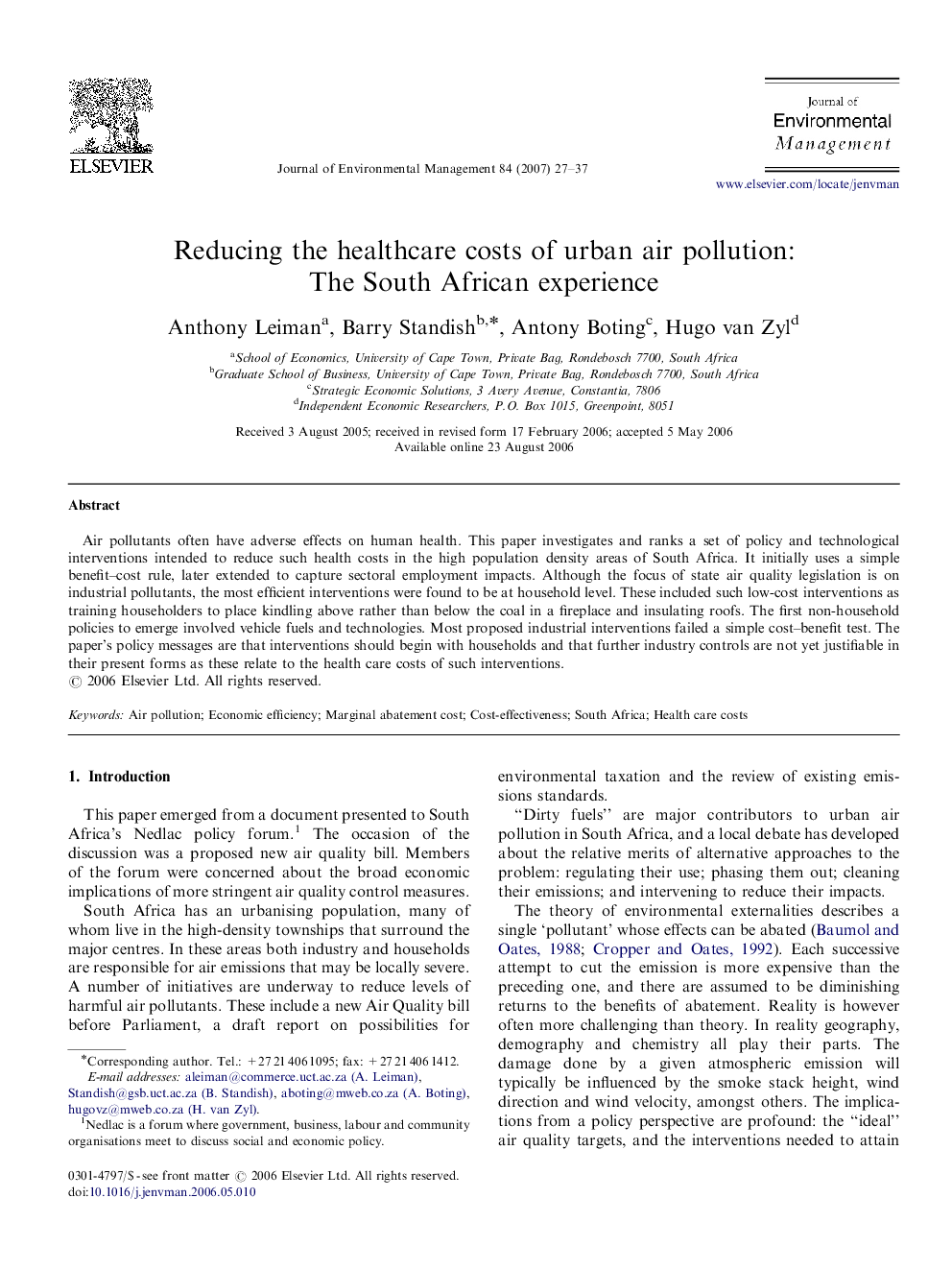| Article ID | Journal | Published Year | Pages | File Type |
|---|---|---|---|---|
| 1058751 | Journal of Environmental Management | 2007 | 11 Pages |
Air pollutants often have adverse effects on human health. This paper investigates and ranks a set of policy and technological interventions intended to reduce such health costs in the high population density areas of South Africa. It initially uses a simple benefit–cost rule, later extended to capture sectoral employment impacts. Although the focus of state air quality legislation is on industrial pollutants, the most efficient interventions were found to be at household level. These included such low-cost interventions as training householders to place kindling above rather than below the coal in a fireplace and insulating roofs. The first non-household policies to emerge involved vehicle fuels and technologies. Most proposed industrial interventions failed a simple cost–benefit test. The paper's policy messages are that interventions should begin with households and that further industry controls are not yet justifiable in their present forms as these relate to the health care costs of such interventions.
